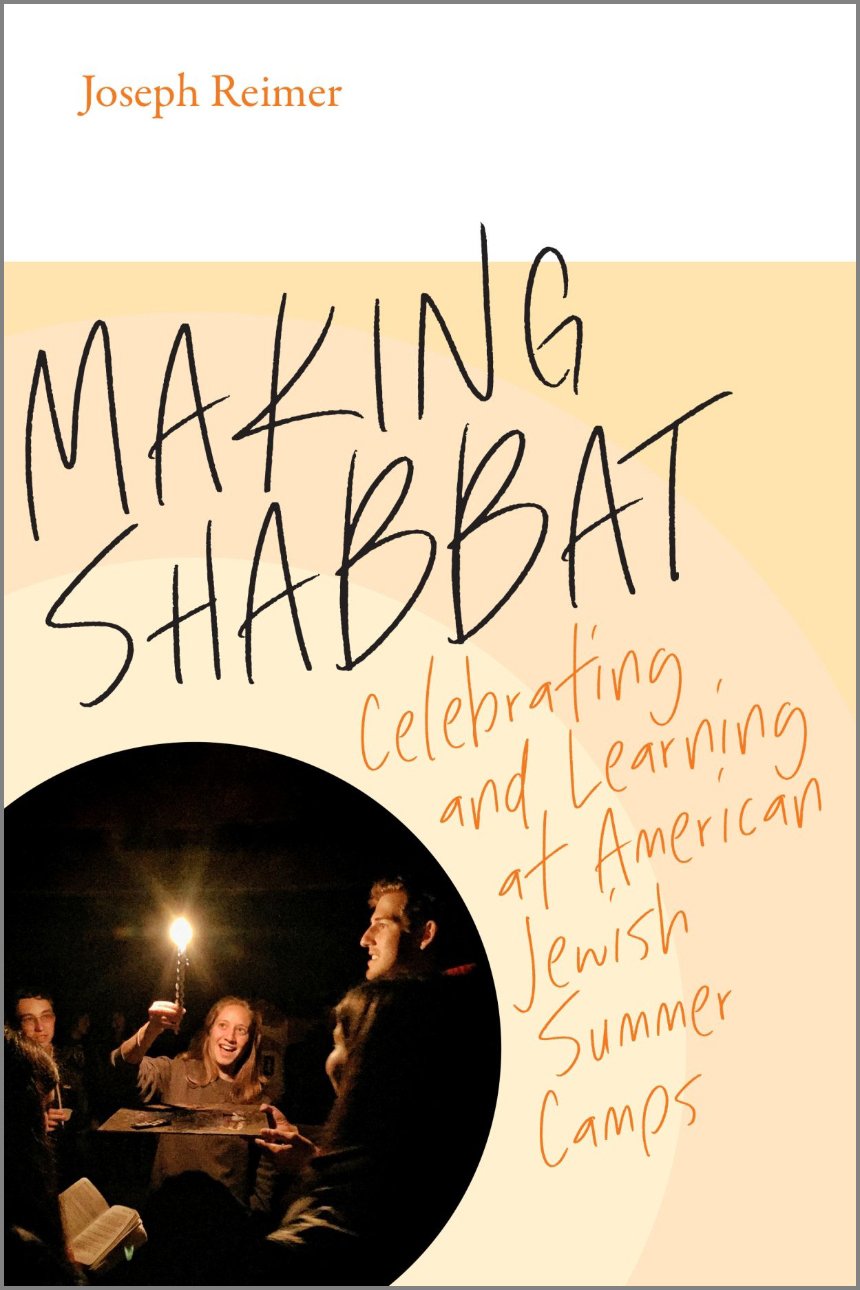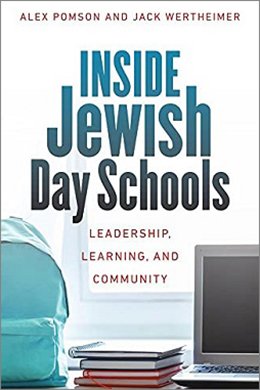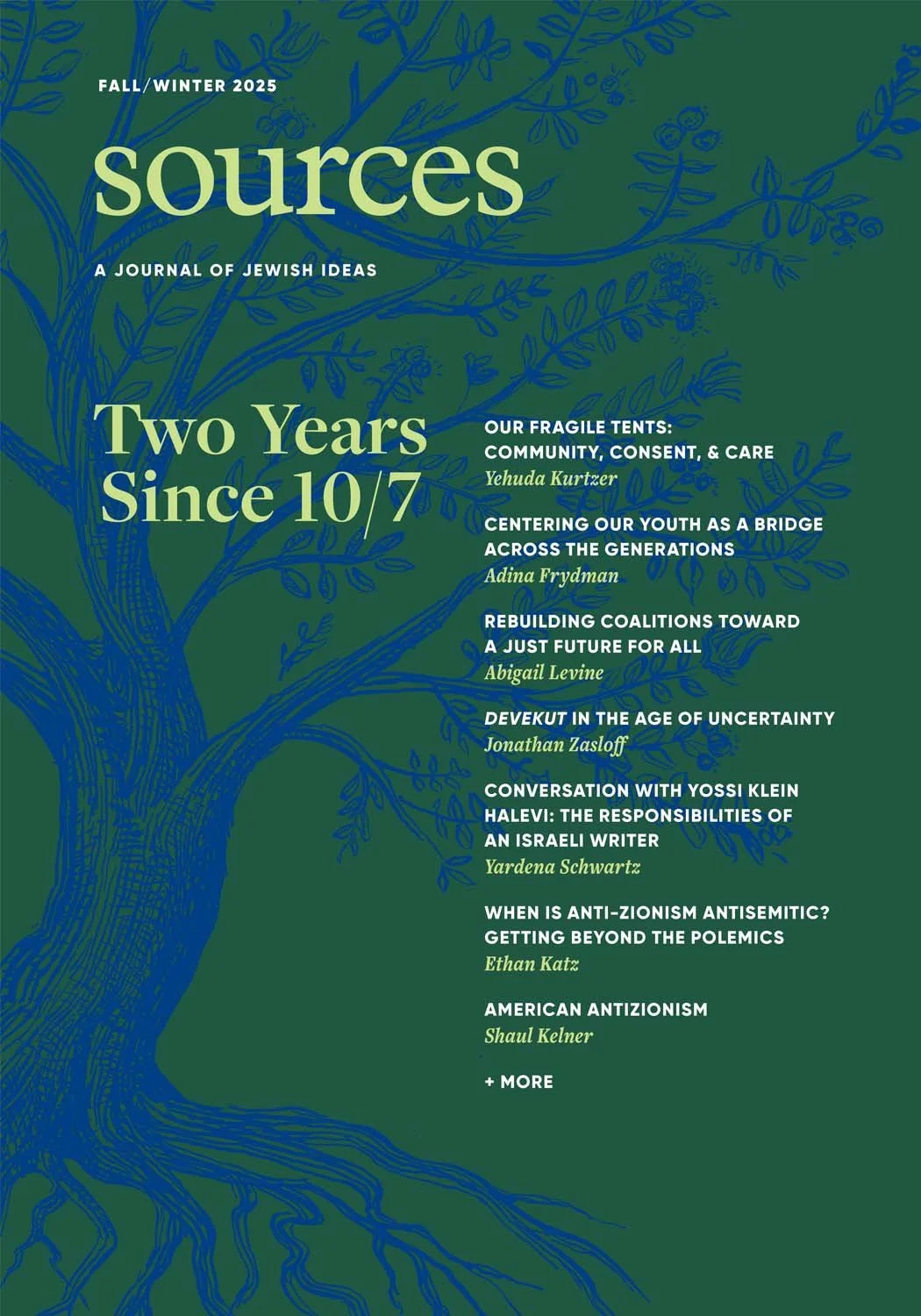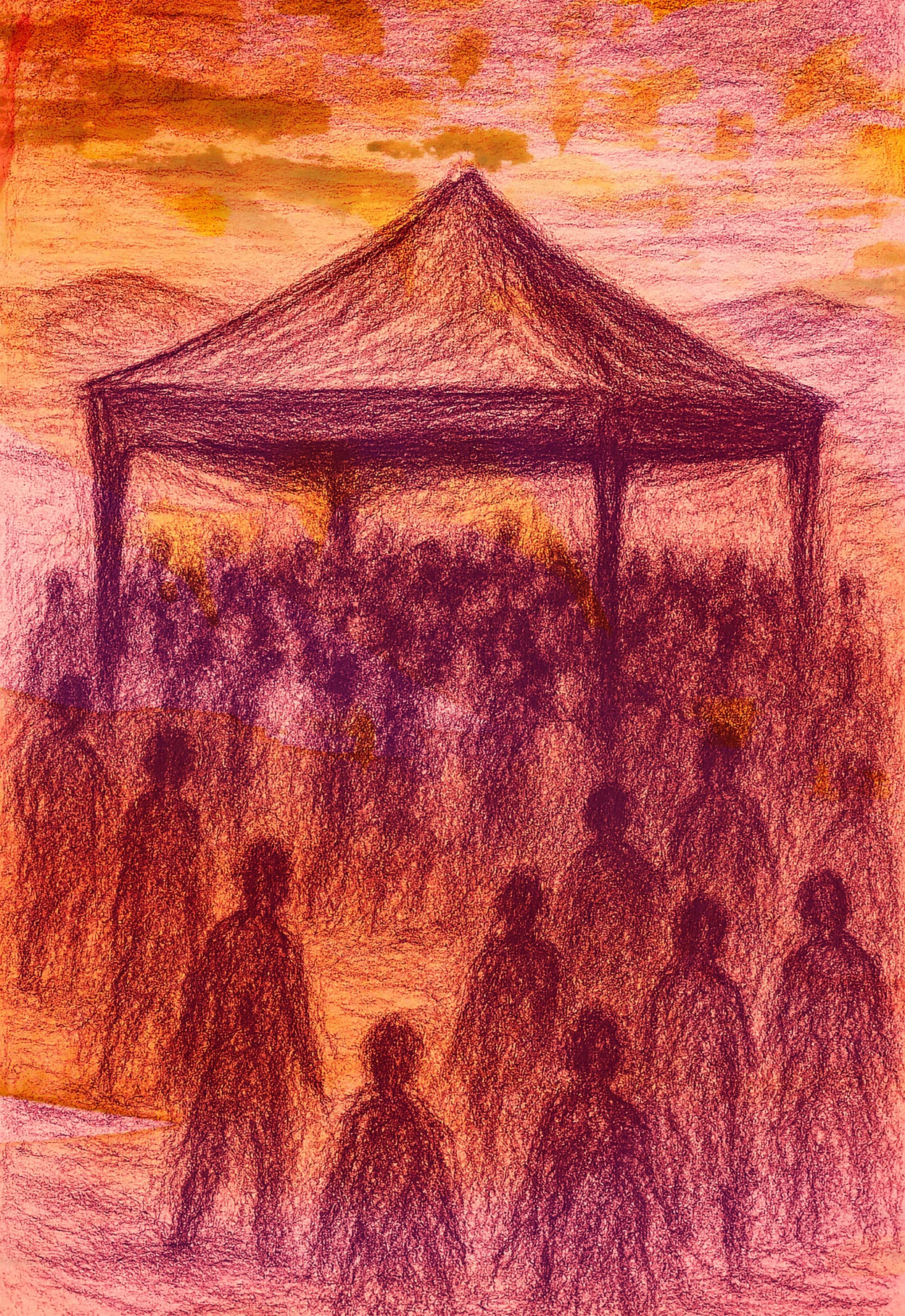Making Jewish Education Vibrant
IN REVIEW
Joshua Ladon
Joshua Ladon is Director of Education for the Shalom Hartman Institute of North America.
Given the significant philanthropic support for Jewish education and engagement initiatives, and the way such initiatives are so often anticipated as panaceas for all sorts of Jewish communal ills, it may come as a surprise to learn that at best, one or two books about Jewish education are published each year, and of these, very few reflect empirical research. Most works are either philosophies of Jewish education or descriptions of practitioners’ work. The relative lack of peer-reviewed research into what happens during, and as a result of, different models of Jewish education may be explained by the fact that there are only a handful of universities employing scholars whose full-time focus is producing Jewish educational scholarship.
Instead, most Jewish educational research takes the form of “program evaluations” commissioned and funded by philanthropic organizations as a means of evaluating the success of their investments, and such reports often remain in the private hands of educational institutions and their philanthropic supporters. Program evaluation is also a specific type of research that, according to scholar Michael Scriven, focuses on “judging the worth or merit of something or the product of the process.” In this context, the “effectiveness” of a program is regularly defined as a set of quickly identified and easily measured outcomes, and most evaluation is completed soon after a program finishes. For example, an evaluator studying a 12-month professional development program for heads of Jewish day schools might interview participants before, during, and after the program to evaluate its impact and then produce a report within six months of the program’s last scheduled event.
Program evaluation is extremely useful for assessing the immediate effectiveness of an educational project as it relates to specific areas of concern. It serves as an important tool for ensuring accountability, which can help to protect the significant philanthropic investment in Jewish education. However, program evaluation does little to flesh out the intricacies and nuances of educational practice, and if we rely on it exclusively, we risk seeing Jewish education more as an assembly line than as a complex process of acculturating, constructing, and inviting participants into an ever-expanding Jewish conversation.
This past year saw an uncommonly robust offering of peer-reviewed research publications by scholars of Jewish education that, together, offer a broader and deeper view of the field and suggest pathways to a more vibrant lived experience for American Jews. In particular, I want to highlight My Second Favorite-Country: How American Jewish Children Think About Israel by Sivan Zakai, and the first two books in the new Mandel-Brandeis series in Jewish Education, Making Shabbat: Celebrating and Learning at American Jewish Summer Camps by Joseph Reimer and Inside Jewish Day Schools: Leadership, Learning, and Community by Alex Pomson and Jack Wertheimer. With a focus on Israel, summer camps, and day schools, respectively, the three books speak to the holy trinity of Jewish education. In each book, the authors have chosen to focus on those who might be called “highly engaged” families and students who have opted into some of the most extensive (and expensive) Jewish educational programs. This suggests that whatever is taught in these programs is reinforced by parents and others in the students’ larger worlds. Nevertheless, because these different works concentrate on details that give texture to the serious practice of and participation in Jewish education, their conclusions are valuable to the broader Jewish community.
Zakai’s book, My Second Favorite Country, is an ambitious piece of scholarship, and unparalleled in the Jewish educational landscape. While a significant amount of contemporary Jewish sociological research has focused on the relationship between what young Jews do or do not know about Israel and subsequently, the commitments these Jews hold towards Israel, this book aims to shed light on a different question: “How do young American Jews know and connect to Israel?” The study traces the way 35 young children interpret and explain Israel in their lives over a six-year period from 2012-2018, from the time they began kindergarten until they finished fifth grade. When the study begins, all the students are enrolled in one of three Jewish day schools, though ultimately some of their life trajectories take them elsewhere. The students come from religiously diverse families, with denominational affiliations across the spectrum of modern Judaism, including the unaffiliated. All of the students—though not all of the parents—are American citizens and reflect the diversity of West Coast Jewry; Zakai notes that eight different languages are spoken in the homes of the participants.
Zakai, a professor of Jewish education at Hebrew Union College, organizes her observations around core thematic questions. The book includes chapters on how children develop conceptions of homeland, how they come to understand the narratives of Israel’s history, how they engage with the Israeli–Palestinian/Arab conflict, and how they see themselves as participants in civic and political processes. Ultimately, she demonstrates that young people have a capacity for and interest in understanding complex social and historical issues, and she asks educators and parents to take them seriously.
In describing how young people come to understand the idea of countries and nations, Zakai shows how children comprehend Israel as a Jewish place for different reasons, ones that take on different valences as the students grow up. Well-designed tables throughout the book capture the different ideas the children express at different ages. For example, Zakai notes that the subjects express what makes Israel a Jewish place in four large categories: lots of Jews, lots of Judaism, special protections for Jews, and connection to God. She then shows at what age students begin to associate Israel with each category, and also what the category means to them at different points. For example, under the category “Israel has lots of Judaism,” Zakai records the children in kindergarten through second grade stating that Israel has lots of synagogues and kosher food, and then, from third grade, beginning to describe Israel as a holy city for Judaism and other religions.
In Zakai’s examination of how young people think historically about origin stories, she identifies four narratives young people use for explaining how Israel came to be: theological (the state was created by God); biblical (the state is part of the larger biblical narrative); Jewish heritage (as Jews have often faced vulnerability throughout history, the founding of the state responds to a contemporary need for Jewish safety); and Zionist (the state is a modern phenomenon providing for the safety of the Jews, specifically after the Holocaust).
Love Jewish Ideas?
Subscribe to the print edition of Sources today.
A chapter titled “Israel vs. The Other Team” explores children’s understanding of what Zakai refers to as the “Israeli – Arab/Palestinian Conflict,” reflecting the ever-changing vocabulary of the conflict. The chapter is organized into three sections, each coinciding with both a specific shift in the developmental capacities of the students and a change in the sociopolitical realities of the region. For example, as kindergarten students, the children were largely unaware of Israel engagement in Operation Pillar of Defense (an anti-terrorist operation in the Gaza Strip) in November 2012. In contrast, they were quite aware of Operation Protective Edge (also called the Gaza War), which happened two years later. This distinction supports Zakai’s more general observation that early elementary (grades K-2) Jewish students generally had an awareness of Israel’s participation in an ongoing, violent conflict, but it was mostly amorphous. They often conflated historical and contemporary conflicts, by, for example, identifying a photo of contemporary Israeli soldiers as an image of the Maccabees (an answer that might have gladdened early Zionists, who often used such mythic imagery!), or stating that Israel is a safe place for Jews and also a dangerous place, often prone to wars. In contrast, by the time the children were in late elementary school (grades 4-5) from September 2016-2018, they stopped talking about abstract “bad guys,” and began to identify and locate Palestinians and other regional players in the conflict. Towards these later years, they also began to understand the United States’s role in the conflict and to develop the capacity to see non-Jewish and non-Israeli views of the conflict.
Zakai includes observations for educators, rabbis, and parents at the conclusion of each chapter and then again in the book’s overall conclusion. Her observations about the Israeli-Palestinian conflict are particularly important. Having demonstrated that children as young as five are able, in their own ways, to understand complex geopolitical conflicts, she acknowledges that the conflict in Israel provides a deep challenge for Jewish educators, one that she describes as “two distinct yet interrelated balancing acts.” First, adults must enable children to learn about challenging world problems without losing sight of their emotional safety. Second, adults must help young people learn about the world as it is while also giving them the space to reimagine what it could look like. Combined, this frames education as focused on broadening young people’s horizons, providing them with the cognitive and emotional tools to engage this ever-expanding world, and empowering them to think in new ways about the world they will inherit.
This chapter (and the book more broadly) is a helpful reminder for educators of young people’s capacities for complex thinking; the benefits of taking young people seriously; and the need for adults to serve as facilitators and guides through murky waters. Zakai’s exploration of the ways young people’s thoughts about Israel shift over time, as they develop new language to articulate complex ideas, makes the notion of using simple surveys to measure young people’s connections to Israel seem almost silly. Surveys can only offer a snapshot in time, whereas Zakai’s findings are drawn from a form of resource-intensive educational research, in response to which she advances an important reminder: education is an endeavor that requires helping students navigate through mystery, difficulty, and discomfort.
Making Shabbat: Celebrating and Learning at American Jewish Summer Camps, Joseph Reimer’s account of Shabbat at three highly regarded non-Orthodox Jewish summer camps, is another example of slow and deliberate Jewish educational research and the insights it can yield. Reimer, a professor of Jewish education at Brandeis University, began this project after noticing—in the course of his earlier research on Jewish camping—that Shabbat has become, over the last two decades, the centerpiece of the North American Jewish summer camp experience. In Making Shabbat, he unpacks how this came to be, by asking what it looks like to intentionally develop a communal Shabbat practice, thus exemplifying what Nobel bio-chemist Albert Szent-Györgyi is known for saying: “Research is to see what everybody else has seen, and to think what nobody else has thought.”
Reimer focuses on the Shabbat practices of the Conservative movement’s Camp Ramah in Wisconsin, the Reform movement’s Eisner Camp in western Massachusetts, and Camp Yavneh, a pluralistic summer camp in New Hampshire that serves primarily but not exclusively Conservative and Modern Orthodox families. (My eldest child has spent two summers at Camp Yavneh.) The book is split into three sections: the first addresses how Shabbat became such an intentional educational focus in Jewish summer camps; the second illuminates the practices that enable such intentionality; and the third describes how and what one learns through the experience of a purposeful Shabbat.
Reimer shows that while Shabbat was a feature of the many Jewish camps that started as “fresh air” retreats for poor, inner-city Jewish kids during the early part of the 20th century, it is only in recent decades that it has come to be one of the pinnacles of the camp experience. When taken seriously, Shabbat can yield an opportunity for deep spiritual growth, an unparalleled experience of community, a fully immersive experience of Jewish practice, and connection to tradition. The thrust of Reimer’s analysis is that Shabbat does not happen at camp by accident. It can easily become more of a chore than an opportunity (as was certainly the case at the camp I attended, where the pared-down Shabbat schedule offered an opportunity for staff days off). With careful construction of their Jewish ecosystems, great camps can place Jewish celebration at the center of the camp experience, building intentional community and offering campers and staff an activated, participatory Judaism. In drawing attention to how Shabbat is made at camp, Reimer uncovers how seemingly banal actions can set a foundation for rich experiences.
I was particularly taken with Reimer’s attention to patterns he saw in the ways each camp set the stage for Shabbat. The campers’ preparations on Friday afternoons pave the way to rituals of transition before the intense celebrating begins on Friday nights. He notes that Shabbat at camp begins in the days leading up to Friday night, as the whole camp prepares. Some of this prep is utilitarian. At Eisner, for example, whichever units are tasked with leading that week’s Shabbat services begin practicing as early as Tuesday. Yavneh has a tradition of ending “standard” camp programming on Friday afternoon at 4:45 and beginning the transition to Shabbat with a pizza snack. I know from my own experience as a camp administrator that creating and implementing such a tradition—an extra hot snack between lunch and dinner for hundreds of people—requires the kind of significant planning a camp staff will only undertake for good reason.
The periods of preparation and transition into Shabbat are also done in service of the affective. At Ramah Wisconsin, the three oldest units can participate in a Thursday night mishmar, an intense experience of singing in community—a tradition drawn from counselors’ experiences in Israeli yeshivot. It is a way of communicating that the week is coming to an end and Shabbat is almost here. The mishmar, filled with songs and stories, can be an intensely emotional experience on its own; because it happens on Thursday night, it is also a gateway leading to something of deeper value, the Sabbath.
When Shabbat is made the pinnacle of communal celebration at camp, the entire staff must be involved. Reimer illuminates the ways the construction of a purposeful Shabbat is also a rich partnership between staff and campers, especially when the younger people step into leadership roles for which they have been strongly mentored. In a time when there is much handwringing and lamenting about the disappearance of non-Orthodox Judaism, Reimer points out—and explains how and why—camps offer one of the only settings where liberal young Jews experience Shabbat fully and wholly with peers, where they are not simply consumers but active constructors.
Finally, Alex Pomson and Jack Wertheimer, in their book Inside Jewish Day Schools: Leadership, Learning, and Community, present portraits of nine North American day schools across the denominational spectrum. Their choice of the concept of portraiture is intentional. Inspired by Harvard professor Sarah Lawrence Lightfoot’s portraits of schools, which focus on “goodness” rather than “perfection,” Pomson, principal and managing director of Rosov Consulting, and Wertheimer, a professor of American Jewish history at the Jewish Theological Seminary, note that their study aims to “present Jewish day schools in the round, as living, evolving organisms.”
The nine featured schools represent the geographic, demographic, and ideological diversity of the North American Jewish community—with two limitations. First, there is only one Haredi school included despite the fact that 50% of Jewish day school students in North America are Haredi, a decision made with an eye towards the book’s likely audience, and second, the authors chose not to include a Reform-affiliated day school because the few that exist are quite similar to community schools.
Much like Reimer’s study of Shabbat at summer camps, Pomson and Wertheimer’s in-depth studies of these different schools reveal the complex set of activities at the heart of educating young people and the topography of concerns and desires informing these institutions. Their insights reveal the complexity of “good-enough” Jewish education. Across the various chapters of their book, a number of themes emerge, including the role of Hebrew language education, the connection between the school and the community in helping a school to succeed, and the building of cultural virtuosos.
Regarding Hebrew language, some of the featured schools are committed to total Hebrew immersion while others provide instruction that is far less intensive. But the conversation about Hebrew is much more complex than simply describing what is offered. At Chicago’s Hillel Torah Academy, a Modern Orthodox K-8 Hebrew-intensive school, Pomson and Wertheimer are surprised to discover that, despite the prominence of Hebrew in the curriculum, proficiency in the language is not the school’s primary goal. Instead, the language is viewed as a tool for “ensuring that Israel, and especially Israeli culture, is close to the heartbeat of the school.”
The relationship between the community and the school also looms large in several of the book’s chapters. The authors note that Nashville’s Akiva School sustains Jewish life in the city; without the presence of the school, many Jews might choose to live in cities with larger Jewish communities. By comparison, at Toronto’s Anne & Max Tannenbaum Community Hebrew Academy of Toronto (CHAT), a denominationally diverse 6-12th grade school with over a thousand students, the particularly Jewish nature of the community is a draw for some but a drawback for others. One former student quoted in the book, for example, left after eighth grade because she felt a need to get out of the “Jewish bubble.”
While each chapter offers a peek into the successes, possibilities, and challenges in the featured day schools, the broader analysis provided by Pomson and Wertheimer is also quite valuable. In particular, the authors identify key points about what day schools offer Jewish students, their families, and their communities. They show that day schools have a unique capacity to nurture Jewish students to become what they call “cultural virtuosos,” Jews with the skills, knowledge, and commitment to contribute meaningfully to a vibrant Jewish life, and to build lifelong Jewish networks among them. Moreover, echoing Pomson’s previous work, the authors note that schools are not just for students, they are for families and communities. Day schools also offer ways for parents who have not had significant Jewish education to learn alongside their children. In places where there is only one or just a handful of schools, the school can act as a community anchor. Perhaps the most interesting finding in the book is that schools can act as buffers against broader trends of partisanship among Jews, both in their curricular offerings, as is common in community schools, and in their function as the meeting place for different types of Jews (something that happens in both Orthodox and non-Orthodox schools).
All three of the books I’ve discussed here highlight institutions that serve relatively engaged North American Jewish participants, and some might see this as a major shortcoming, but I disagree. The organized Jewish community’s emphasis on less engaged and disengaged Jews means that Jewish education is too often judged solely by the numbers of participants rather the quality of the education itself, including the intention behind it, how it is implemented, and its lasting impact. To have thriving and robust Jewish communities, one needs institutions that are informed by scholarship as thick as the Jewish identity those same institutions are striving to develop. These three books took significant time (and money) to research and write, and they exemplify exactly the sort of rich and insightful scholarship necessary for nurturing vibrant, lived North American Judaism.






